Search Results for 'Conaire'
26 results found.
The man behind the Ó Conaire statue
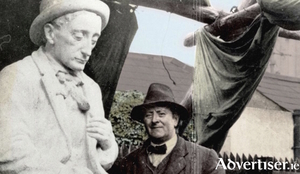
THE SCULPTOR Albert G Power is best known as the creator of the Pádraic Ó Conaire statue, once an integral part of Eyre Square, but now on display in the Galway City Museum.
‘I am an international socialist,’ shouted Pádraic Ó Conaire
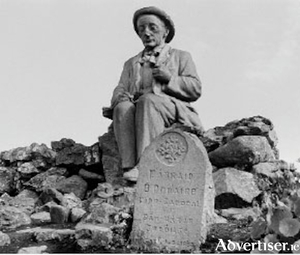
In his famous statue of the writer and Irish scholar Pádraic Ó Conaire, the sculpture Albert Power presents a brilliant likeness to the man Galway knew as he went about the town. Liam Ó Briain, a friend and fellow Irish enthusiast, remarked that Albert Power had captured exactly how the man looked. Meeting Ó Conaire in town one evening, Ó Briain remembered that he looked in reality as he is on the statue: ‘the stick in his right hand, the little hat on his head’, a face that could show his ‘puckish humour.’ *
Museum acquires handwritten Ó Conaire letters
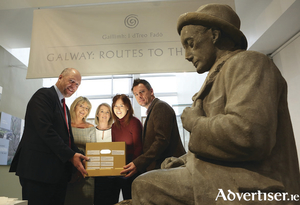
An important collection of letters from the mid-1920s concerning the Irish-language writer Pádraic Ó Conaire has been kindly donated to Galway City Museum by the Galway Technical Institute on the ninetieth anniversary of the author’s death. The letters relate to Ó Conaire’s time as an Irish language teacher at Galway Technical Institute (GTI), then situated on Dominick Street.
Reimagining Pádraic Ó Conaire's most famous tale
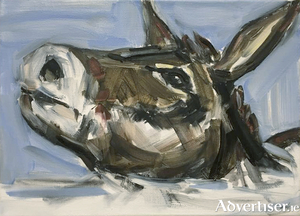
PÁDRAIC Ó CONAIRE'S short story, M’Asal Beag Dubh, about the time the writer bought a donkey from a Travelller family, is the subject of a new art exhibition, taking place where the original story was set - Kinvara.
Public lecture on Pádraic Ó Conaire’s revolutionary side
The name Pádraic Ó Conaire provokes thoughts of his short story ‘M’asal Beag Dubh’, Albert Power’s charming statue, or of his “fondness for a drop” - few think of his involvement in the Irish revolution.
Pádraic Ó Conaire: man and monument
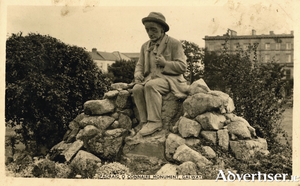
On October 6 1928, writer, journalist, teacher, and raconteur Pádraic Ó Conaire died in tragic poverty in Richmond Hospital, Dublin, at the age of 46. Since the turn of the century he had established himself as one of the leading lights of the Gaelic Revival, an innovative writer who pioneered the short story in Irish.
Historic bilingual publication of Pádraic Ó Conaire’s classic stories
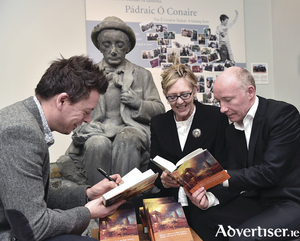
First published in Irish in 1918, Seacht mBua an Éirí Amach/Seven Virtues of the Rising is a collection of seven stories by Pádraic Ó Conaire (1882–1928), published in English for the first time. Despite the title of the collection, the stories themselves are not directly concerned with the actual events of the 1916 Rising, although there are several allusions to key figures and locations.
Pádraic Ó Conaire and the Rising
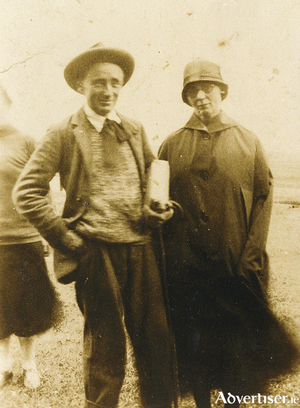
Pádraic Ó Conaire was born on February 28 1882 in a pub by the docks, to middle-class Catholic publicans. He briefly attended the Presentation National School, but when his parents both died young he went to live with some of his extended family in Rosmuc. He later went to school in Rockwell and from there to Blackrock College in Dublin. He emigrated to London and took a lowly job in the civil service. He joined the local branch of Conradh na Gaeilge and flourished as an Irish language teacher and writer. In 1901 he published his first short story, An t-Iascaire agus an File.
Pádraic Ó Conaire's 1916 stories re-launched
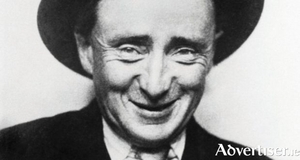
PÁDRAIC Ó Conaire's short stories about the 1916 Rising, Seacht mBua an Éirí Amach/Seven Virtues of the Rising, is to be re-launched in a new edition and translation by acclaimed Galway actor Diarmuid de Faoite.

